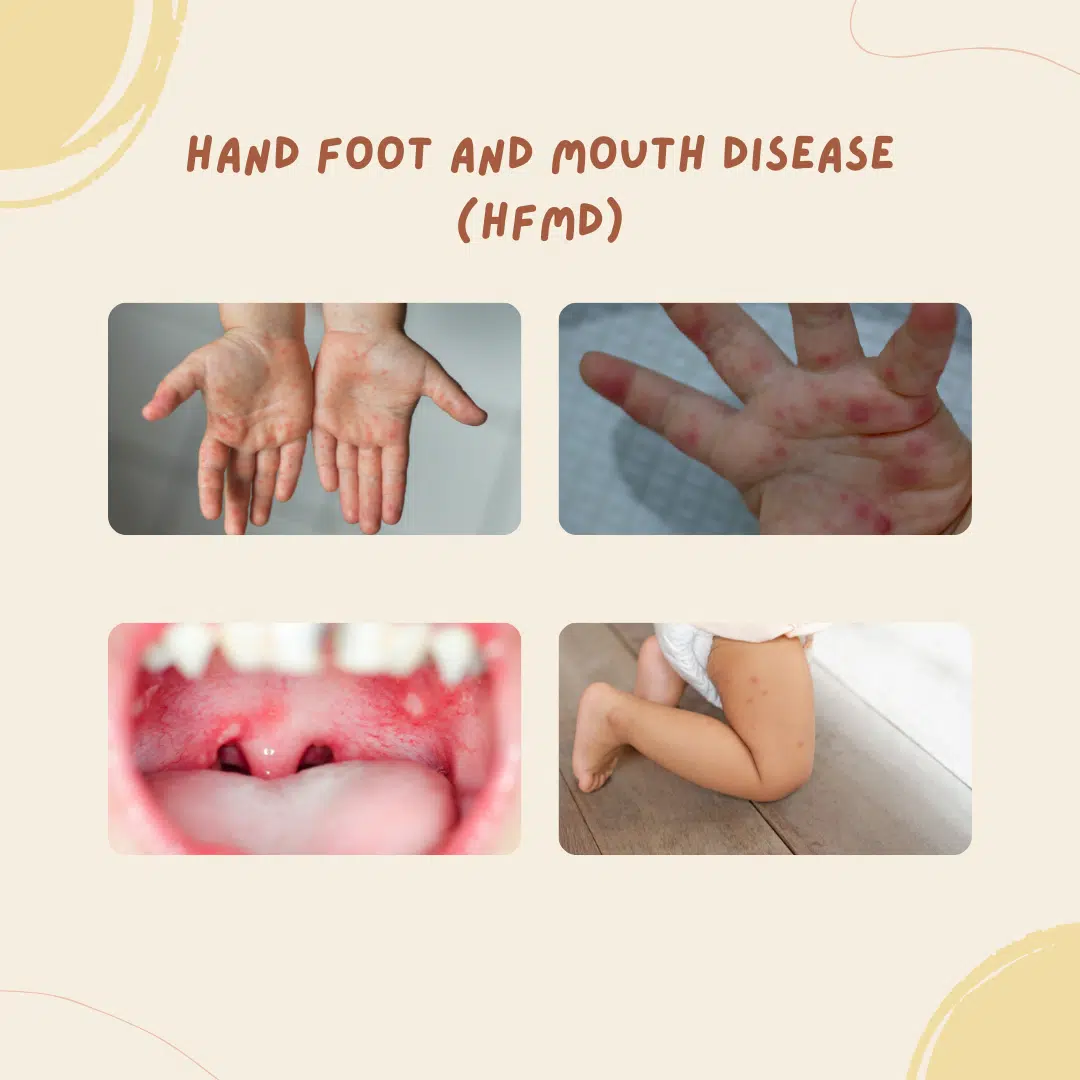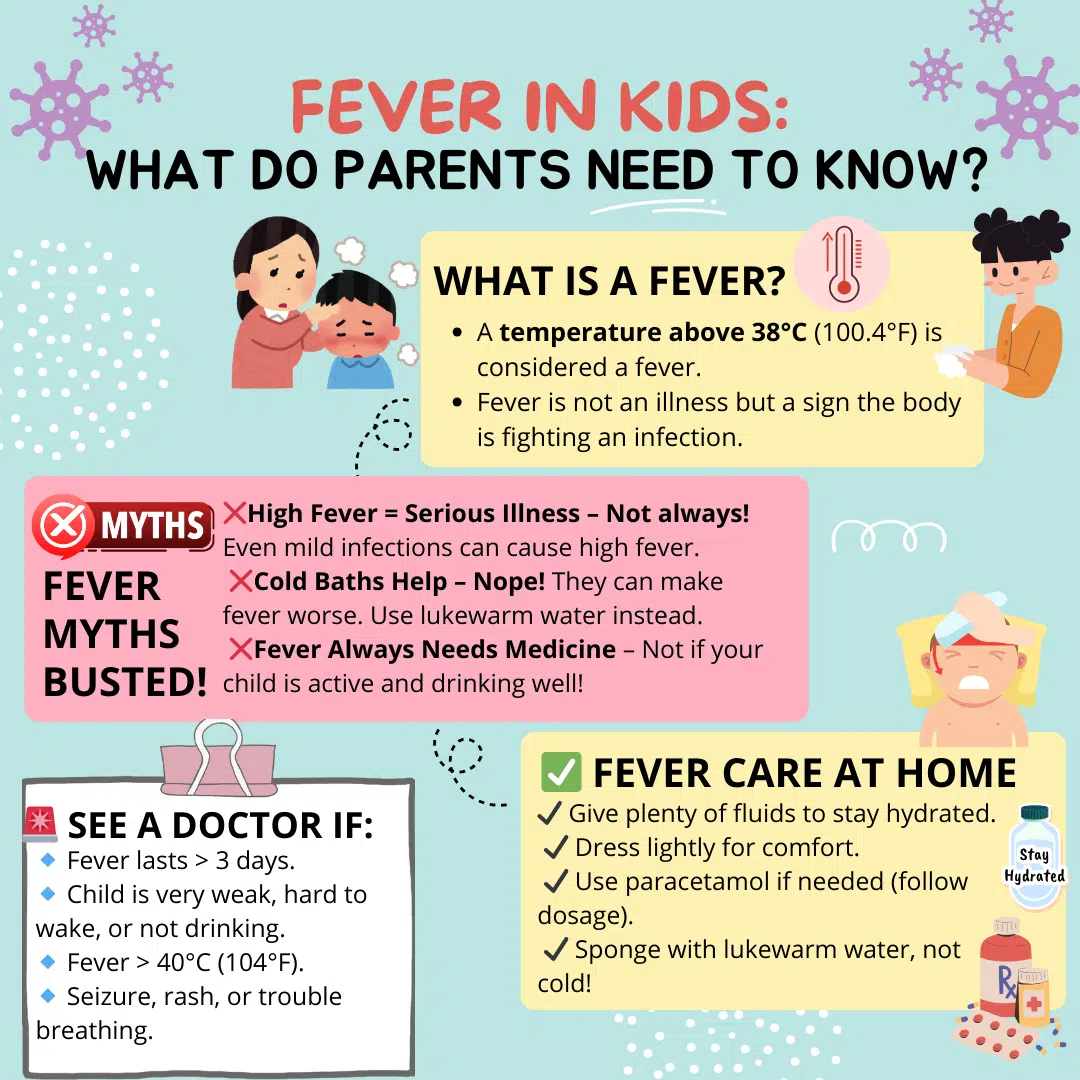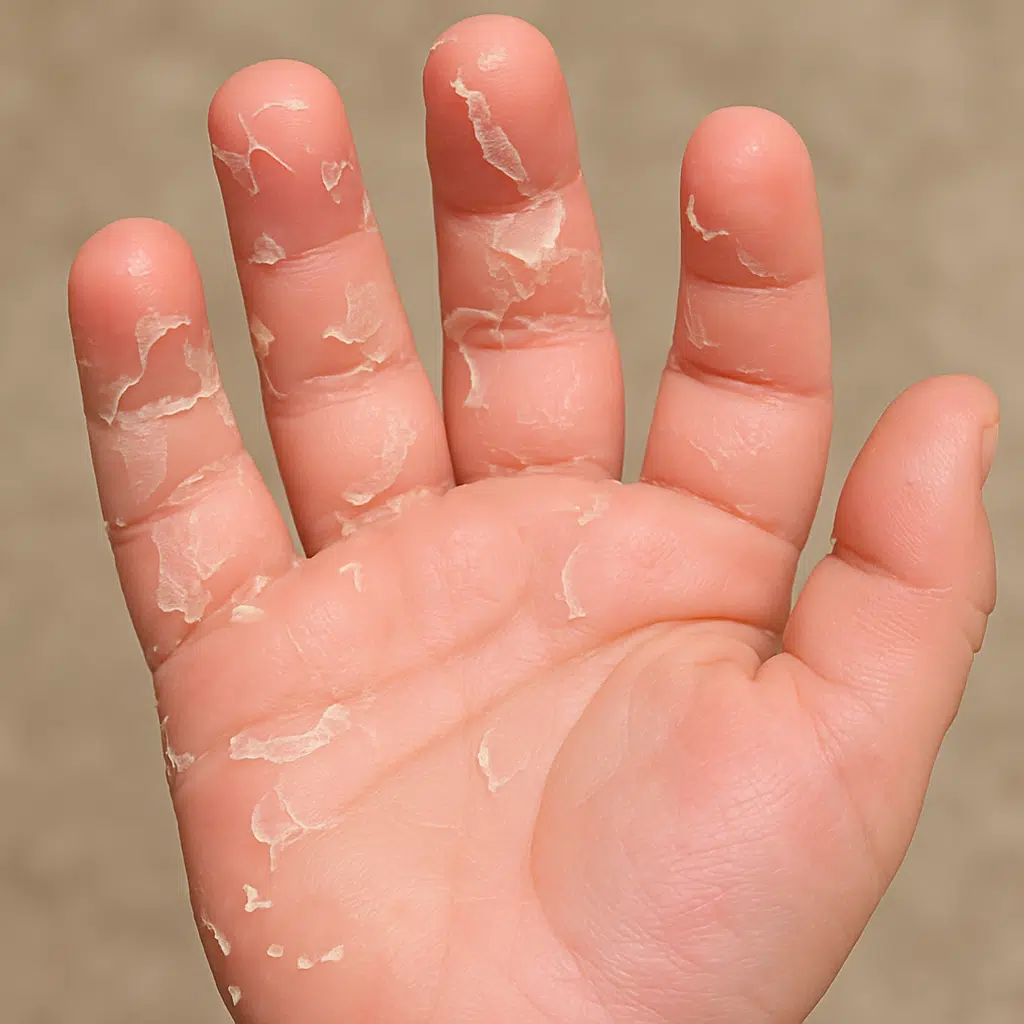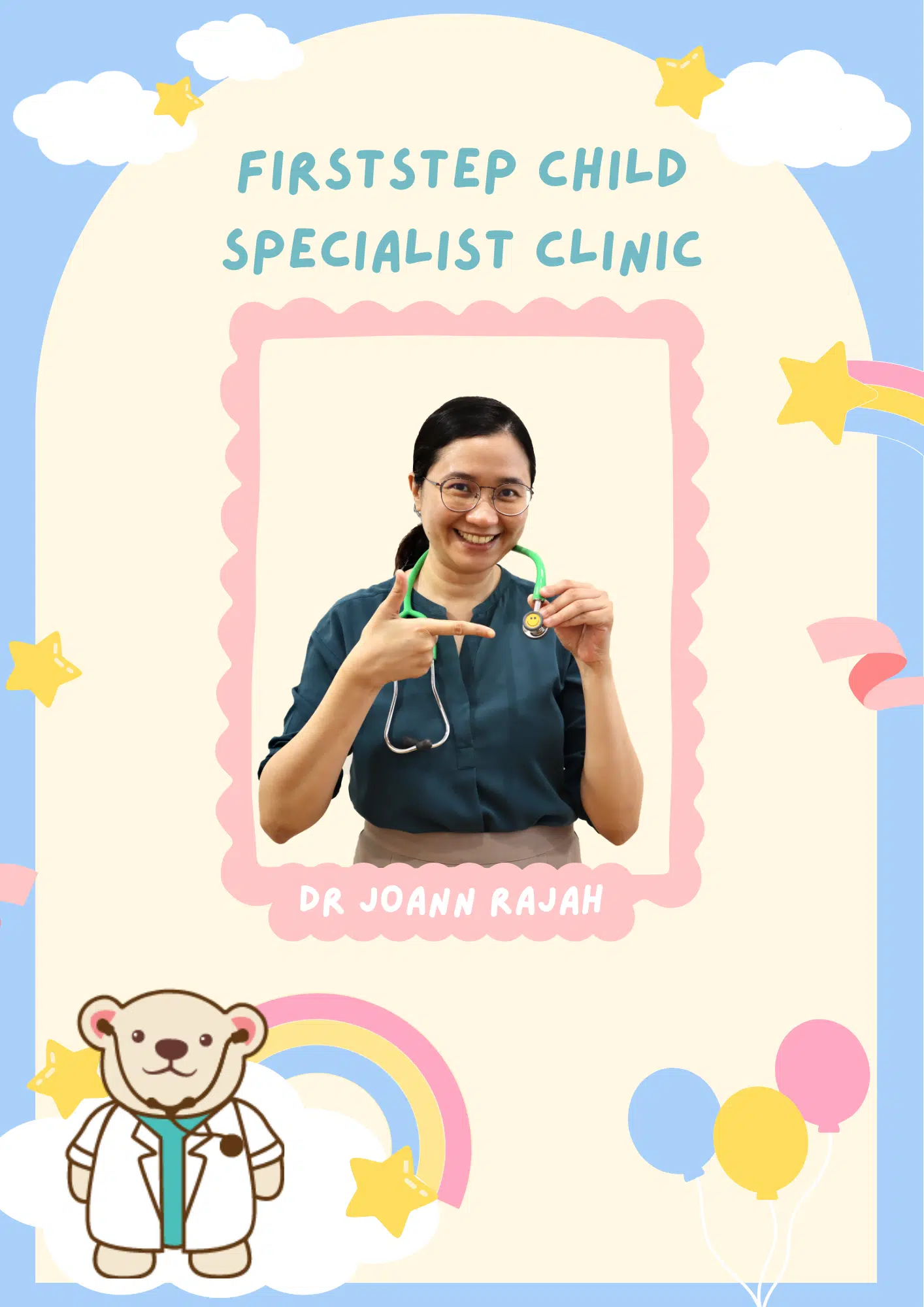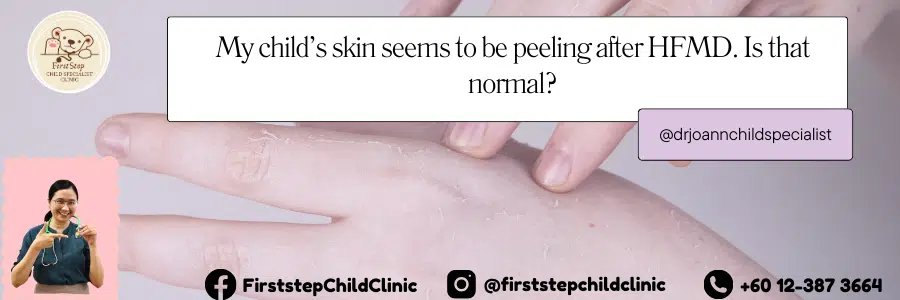
Why Is My Child’s Skin Peeling After HFMD?
Why Is My Child’s Skin Peeling After HFMD?
By Dr. Joann Rajah
“Why is my child’s skin peeling? Is something wrong?” As a pediatrician, one of the most common concerns I hear from parents after their child recovers from Hand, Foot and Mouth Disease (HFMD).
If you’ve noticed that your child’s skin is flaking or peeling, particularly around the hands, feet, fingers, or toes, after recovering from HFMD, don’t panic. While it might look unusual, skin peeling is an expected part of the healing process. Let me walk you through why this happens, what you can do, and when to seek medical advice.
Understanding HFMD and the Healing Process
Hand, Foot, and Mouth Disease is a common viral illness in young children, usually caused by the coxsackievirus. It typically presents with symptoms like:
-
Fever
-
Painful mouth sores, ulcer inside mouth
-
Rashes or red spots on the hands, feet, and sometimes buttocks
-
Loss of appetite and general fussiness
Most children recover within 7 to 10 days with supportive care — rest, fluids, and medications to manage fever and pain. However, even after the fever has resolved and your child seems to be back to normal, there’s often one lingering sign of recovery: skin peeling.
Why Does the Skin Peel After HFMD?
The skin peeling you observe is medically known as desquamation. This is a natural process where the outer layer of the skin sheds and is replaced by fresh, healthy skin underneath. During HFMD, the rash or blisters that appear on the hands, feet, and other areas can damage the outermost layer of the skin. Once the virus clears, the body begins to shed the old, affected skin.
This is not a sign of a new infection, nor does it mean your child is still contagious. It’s simply the body’s way of regenerating and healing from the viral effects.
What Areas Are Commonly Affected?
You’re most likely to notice peeling in the following areas:
-
Palms of the hands
-
Soles of the feet
-
Between fingers and toes
-
Occasionally, around nail beds
-
Less commonly, around the buttocks or legs
The peeling may start as mild flaking, but in some children, it can look like larger patches of skin lifting off. While it can seem dramatic, especially if the skin is shedding in big pieces, it is usually painless and harmless.
How Long Does It Last?
In most children, the skin peeling starts about a week or so after the fever subsides. It can last for one to two weeks, depending on the severity of the original rash or blisters. The new skin underneath may appear pinker or more sensitive at first, but it will gradually strengthen and return to normal.
What Can Parents Do?
There’s usually no need for medical treatment. The best care you can provide at home includes:
✅ Keep the skin clean
Gently wash your child’s hands and feet with mild soap and lukewarm water. Avoid scrubbing or rubbing the peeling areas.
✅ Moisturize
Apply a gentle, fragrance-free moisturizer or lotion (like one formulated for sensitive skin) twice daily. This helps soothe the skin and prevent dryness or cracking.
✅ Don’t pick or peel the skin
Even if it looks like the skin is ready to come off, avoid pulling or peeling it manually. Let it fall off naturally to prevent irritation or infection.
✅ Trim nails and maintain hygiene
Short, clean fingernails reduce the risk of your child scratching and breaking the skin, which can introduce bacteria and cause infection.
✅ Dress your child in breathable clothing
Light, cotton materials help prevent overheating and irritation to sensitive skin areas.
When Should You Be Concerned?
While peeling after HFMD is normal, certain signs may indicate a secondary infection or another condition. You should contact your doctor if:
-
The peeling skin becomes red, swollen, or hot to the touch
-
There’s oozing, pus, or a foul smell
-
Your child develops a new fever after recovering
-
Your child complains of pain in the peeling areas
-
Blisters are reappearing or not healing as expected
These symptoms may suggest that bacteria have entered through broken skin, and your child might need medical attention.
Can My Child Still Go to School or Daycare?
Once your child’s fever has resolved, their mouth sores have healed, and they are eating and behaving normally, they are generally no longer contagious. Skin peeling alone is not a reason to keep them home. By this stage, they’re simply finishing the final part of recovery, and the body is doing exactly what it’s supposed to do.
Always check with your childcare provider’s policies, but in most cases, returning to school is safe and appropriate.
Final Thoughts for Parents
The important thing to remember is that post-HFMD skin peeling is a sign of healing, not harm.
It’s one of those quirky but completely benign parts of the body’s immune response. The virus has come and gone, and now your child’s skin is simply renewing itself, like turning a page to start fresh.
If you ever feel uncertain, don’t hesitate to reach out to your child’s pediatrician. But in most cases, your little one is already on the right track — all you need to do is offer gentle care and a bit of patience.
Dr. Joann Rajah, a Consultant Paediatrician and Early Nutrition Specialist, holds a Bachelor of Medicine and Surgery from Melaka-Manipal Medical College (MMMC) and attained Membership of the Royal College of Paediatrics and Child Health (MRCPCH, UK) in 2017. With over 10 years of experience, Dr. Joann Rajah also has a special interest in skin health, offering expert care in both general paediatrics and dermatological concerns in children.
